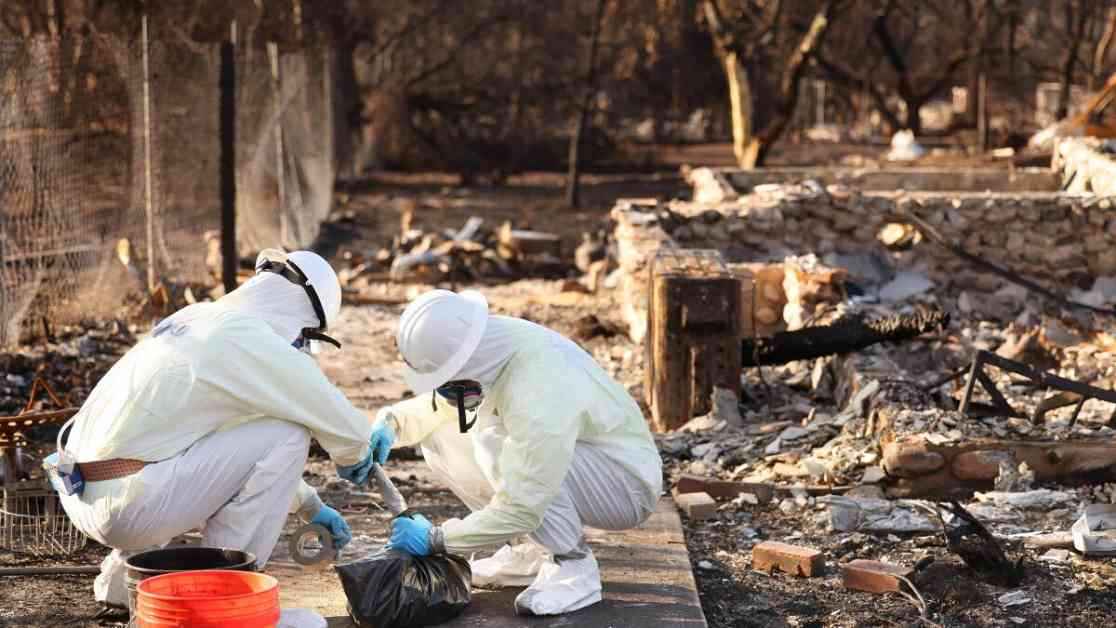Claire Robinson, an Altadena resident, recently returned to her home after nearly two weeks of fleeing the Eaton fire, only to find destruction and devastation. Donning protective gear, Robinson sifted through the ashes of her once-charming 1940s home, now reduced to rubble, with only the brick chimneys standing as a reminder of what once was. The scorching flames had consumed everything, from glass awards to a cast-iron bathtub, leaving behind a toxic environment filled with hazardous materials.
Robinson’s story is just one of the many accounts of residents returning to ash-covered neighborhoods in L.A. following the wildfires, only to face a multitude of unanswered questions and looming health risks. Despite warnings from environmental regulators and health officials about the presence of toxic chemicals like lead and asbestos in the fire-damaged areas, many residents have been left in the dark about the dangers they face.
Fire officials and law enforcement reopened evacuation zones before a thorough cleanup could be conducted, prompting concerns about the safety of residents returning to their homes prematurely. The EPA and the Army Corps of Engineers have launched massive cleanup efforts in response to the wildfires, with the hazardous waste removal expected to last several months and debris removal projected to take up to 18 months.
As crews work tirelessly to clear the debris and hazardous materials from the affected areas, residents like Robinson are calling for clearer guidance and support from government agencies to ensure their safety. Robinson emphasizes the importance of protecting oneself from the toxic environment, especially as residents begin the arduous task of cleaning up their contaminated properties.
The cleanup efforts have also raised concerns about water contamination and the long-term health effects of exposure to hazardous materials. Lead-based paint and asbestos-containing construction materials in older buildings pose a significant risk to residents, with the aftermath of the wildfires reminiscent of the hazardous conditions at Ground Zero following the Sept. 11 attacks.
Residents like Garo Manjikian have taken matters into their own hands, renting air purifiers and cleaning their homes to remove toxic ash and debris. Others, like Felipe Carrillo, who fought the wildfires without protective gear, face uncertainty about the health impacts of their exposure to toxic chemicals.
The ongoing cleanup efforts in L.A. are a reminder of the dangers posed by urban wildfires and the importance of taking precautions to protect oneself from harmful contaminants. As residents navigate the complex process of rebuilding their lives in the wake of the wildfires, the need for clear guidance, support, and protective measures becomes increasingly crucial.
In the face of adversity, residents like Claire Robinson continue to advocate for comprehensive efforts to educate and protect the community from the unseen dangers lurking in the ashes of the wildfires. The road to recovery may be long and challenging, but with resilience, unity, and a shared commitment to safety, the residents of L.A. will weather this storm together.


